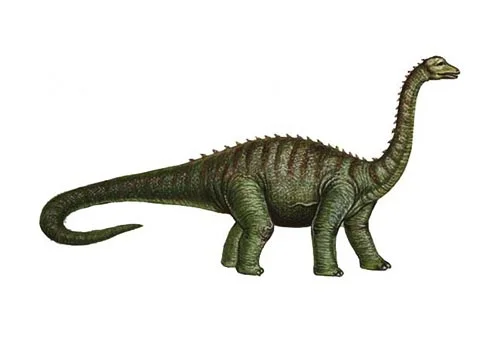Antarctosaurus (Southern lizard)

An-tarc-toe-sore-us
Friedrich von Huene - 1929
Herbivore
Estimated 18 meters long maybe larger
Sauropod
A. wichmannianus (type)
Argentina, Chile, Uruguay
Late Cretaceous, 84-65 million years ago
Antarctosaurus Facts
Antarctosaurus (/aen,ta:rktoU’so:r@s/; meaning “southern lizard”) is a genus of titanosaurian sauropod dinosaur from the Late Cretaceous Period of what is now South America. It is the most common species in the genus and was named in 1929 in honor of the first person to discover their remains from 1912 by geoscientist Ricardo Wichmann.
Three other Antarctosaurus species have also been described since then, but later research has concluded that they are as doubtful or unlikely to belong to the Genus. The species that is the type, A. wichmannianus, is a source of controversy because there is doubt as to whether the remains described belong to the same individual or the same genus.
The other kind of species A. giganteus, has been regarded as doubtful, but the fragments represent some of the biggest dinosaurs that have been discovered.
Von Huene named a fragmentary second species of Antarctosaurus in 1929, which he tentatively referred to as cf. Antarctosaurus giganteus due to its size. The fossils were discovered in the Neuquen Province of Argentina, from the Plottier Formation which dates to the Coniacian-Santonian stage in the Late Cretaceous Period. There are only a few known remains of this species, and it is considered to be a nomen dubium for some. Leigh Van Valen considered A. giganteus as being a plausible species, though it could be part of an entirely new genus.
In 1933, Von Huene and Charles Matley identified a different species, Antarctosaurus septentrionalis, which means “northern”. The species is able to preserve significant anatomical data, but it was classified as a genus in 1994. Antarctosaurus jaxarticus of Kazakhstan is recognized by only one femur.
Antarctosaurus was the first sauropod species to be discovered in Kazakhstan, and was found at an area in the Kyzylkum Desert. It is believed to date up to the Santonian phase of Late Cretaceous.
In 1970, two broken bones from the limbs and a fragmentary vertebra were discovered within the Adamantina Formation in Brazil, and were first described by Fahad Moyses Arid and Luiz Dino Vizotto in 1971 as A. brasiliensis.
The remains identified belong to sauropods, likely titanosaurs, an assemblage of large-bodied herbivores that are quadrupedal, typically having a an extended neck and tail.
Antarctosaurus is a genus that has been criticized since none of the species listed have been identified from complete remains and the type species is comprised of elements of uncertain relationship, which has led to confusion in the taxonomy. Four additional species assigned to Antarctosaurus throughout the years have been deemed doubtful.



